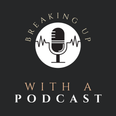As competition for jobs increases, applicants are increasingly being asked to put together a presentation as part of their interview. Head of The Careers Clinic, Eoghan McDermott, tells us how to turn this potential pitfall into an opportunity.
By Eoghan McDermott
As competition for jobs increases, applicants are now frequently being asked to prepare a presentation on a specific topic like “How would you sell our product?†or “The Challenges of the Roleâ€. These presentations offer you a terrific opportunity to shine. You can communicate directly with the interview panel, face-to-face (Research shows the second most effective mode of communication is face-to-face, to a small group. That’s only bettered by talking face-to-face with one person).
You can demonstrate your familiarity and connection with the company or organisation you want to join, you can display your powers of influencing and persuasion and you can – and this may be the best bit – remind them of your unique skills and achievements, the ones that show them you’re the answer to their prayers. Here are some simple rules to follow…
Rule #1
Focus on your Audience not on yourself
Most people when they’re told they must deliver a presentation in a job interview think first about themselves – their nerves, their words and the slides they’re going to use.
Every great presentation or speech starts with the audience. Profile them. Find out who is on the interview panel, their backgrounds and their needs.
The next step is crucial. Write out what it is you want the audience thinking, feeling, doing, knowing after the presentation. Most likely that you’re the best person for the gig. Now you have a purpose.
Rule #2
Be Interesting, Understandable and Memorable
The audience must be quickly engaged. The first minute is the gateway to their continuing attention. In this gateway you must grab their attention.
Pick the single most interesting point you want your audience to remember and put it at the start. Cut to the chase. Don’t waste their time with agendas, contents or lengthy introductions. Pick a couple of key points and then figure out how to make these interesting, understandable and memorable.
The use of specific examples, illustrations and anecdotes rather than bullet points help your audience understand. Every race in every country at every time since humanity started has relied on stories as a way of understanding the world around them, because stories are interesting, understandable and memorable: the three key qualifications for good communication. The Bible, the Koran and The Torah are all based on stories and examples to create understanding. When it comes to presentations, stories are an essential way to make the conceptual understandable.
Rule #3
When Preparing, Say it out loud
After deciding what you want to say, prepare for the spoken word in the spoken word. Walk around the room, making your points out loud. Write down what you like and keep talking until what you don’t like fixes itself. When you have worked out the key things you want remembered, work out the best sequence for them, so they link logically one to another. Failure to have that logic, those seamless links, is where you put yourself in danger of drying up: Oh God, I don’t know what comes next.
Saying your presentation out loud also increases your confidence. Just like telling a joke for the third or fourth time rather than for the first time – practice makes you feel more confident – with timings, punch line, key elements. Not learned off, just to the point where the sequence and the illustrations are familiar. Good preparation also inspires confidence in your audience. Audiences like presenters who know their subject and have internalised the material rather than just passing on a set of points.
Cards are the best prompt method, although not a million tiny cards. More useful are sizeable cards carrying trigger words, not full sentences, written with a thick black felt-tip pen, twice the size of the speaker’s normal handwriting, because the speaker will be under pressure and the words must leap off the cards at a glance. Be sure to have your cards in your gaze path, so that when you do glance down you’re not searching for them.
Rule #4
Be wary of PowerPoint
Only after you have prepared what you want remembered do you consider using technology. When you consider PowerPoint be sure to ask yourself, “Is this slide going to help me exemplify what I’m trying to say?†Graphs, tables and organisational structures are excellent for PowerPoint. They help you exemplify a point that is difficult to do in words. For example, the fluctuations in sales between 1996 and 2006 of the product they want you to try and sell. Graphs help you do this, bullet points don’t.
An even worse problem with PowerPoint is where it’s used by speakers as a prompt for themselves. Prompts are necessary but inflicting your reminders on an audience as if it served their needs, when it clearly doesn’t, is counter-productive. The moment a PowerPoint presentation starts the danger is that the audience may decide “OK, this doesn’t require any active involvement from me.â€
Focus on your audience, identify your objectives, make it interesting, understandable and memorable, prepare well, be wary of PowerPoint and if you can, enjoy it.
Eoghan McDermott is Head of The Careers Clinic in The Communications Clinic and is the author of The Career Doctor – How to Get and Keep the Job You Want.
LISTEN: You Must Be Jokin’ with Aideen McQueen – Faith healers, Coolock craic and Gigging as Gaeilge





















































